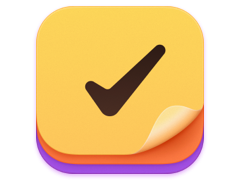By John Gruber

Finalist for iOS: A love letter to paper planners
Linked List: January 7, 2015
Wednesday, 7 January 2015
- Two Scenarios for the Smart Watch Market ★
-
Interesting analysis from Creative Strategies’s Ben Bajarin, speculating that the smart watch market will likely break in one of two ways:
- Like MP3 players, where Apple dominates in market share.
- Like the phone market, where Apple owns the profitable high end of the market, but with a 20-or-so percent share of the total market.
Here’s the thing I keep thinking about. Watches and wearables are like Apple Pay, insofar as no third-party solution can compete with Apple for iPhone users. Apple Pay feels like magic because it’s built into iOS, with links to the NFC and Touch ID hardware. Third-party payment solutions can be (and have been) built apps for iOS, but no mere app can offer the experience Apple Pay does.
It’s the same with wearables. Apple Watch will have integration with the iPhone at the system level, not the app level. Other smart watches may succeed, but I doubt they will succeed with iPhone users. If you’re an iPhone user, and you want a “smart” wearable, you will buy an Apple Watch.
Conversely, I don’t think Apple Watch will ever have any appeal to non-iPhone users. This first year, Apple is explicit about it — you need an iPhone to use Apple Watch. So the question of whether the overall smart watch market winds up looking more like MP3 players or phones comes down to how many non-iPhone users will buy any smart watch at all.
(The third possibility I see: smart watches, Apple Watch included, never really become a big deal.)
Update: So is this an anti-trust risk for Apple? I think no, thanks to the advantage of not having even close to a majority market share in phones.
- The 2014 Panic Report ★
-
All sorts of interesting stuff in this year-in-review post by Panic’s Cabel Sasser, but this stuck out to me:
This is the biggest problem we’ve been grappling with all year: we simply don’t make enough money from our iOS apps. We’re building apps that are, if I may say so, world-class and desktop-quality. They are packed with features, they look stunning, we offer excellent support for them, and development is constant. I’m deeply proud of our iOS apps. But… they’re hard to justify working on.
Their unit sales are roughly 50-50 Mac/iOS, but Mac apps account for 83 percent of their revenue.
Games are a different market, but for other apps, I think iOS apps are more like websites than Mac apps. People expect them to be free to use. There are exceptions of course — successful paid websites and successful paid iOS utility apps — but as a basic rule of thumb I’m pretty sure I’m right.
- The 12-Inch MacBook Air Is the New iPhone 5C ★
-
I’m linking here to a Rene Ritchie piece from two years ago, nine months before the iPhone 5C was unveiled. Throughout the year there was a drumbeat of rumors that Apple had two new iPhones in the pipeline: a new high-end model to replace the iPhone 5, and a plastic-bodied new model.
The way a lot of people — tech writers and business analysts alike — looked at that situation like this:
- It was finally possible to make a modern touchscreen phone at very low prices.
- All other handset makers (than Apple) were doing so.
- That meant Android was gaining market share against iOS among people spending, say, $100 for the phone on pre-paid accounts.
- Thus, the new plastic iPhone must be Apple’s entry into that market.
It wasn’t. The “cheap” iPhone 5C cost over $500 unlocked.
That’s exactly the same pattern I see with The Verge’s take on the purportedly upcoming 12-inch MacBook Air. They’re looking at Apple as though Apple is a typical laptop maker.
